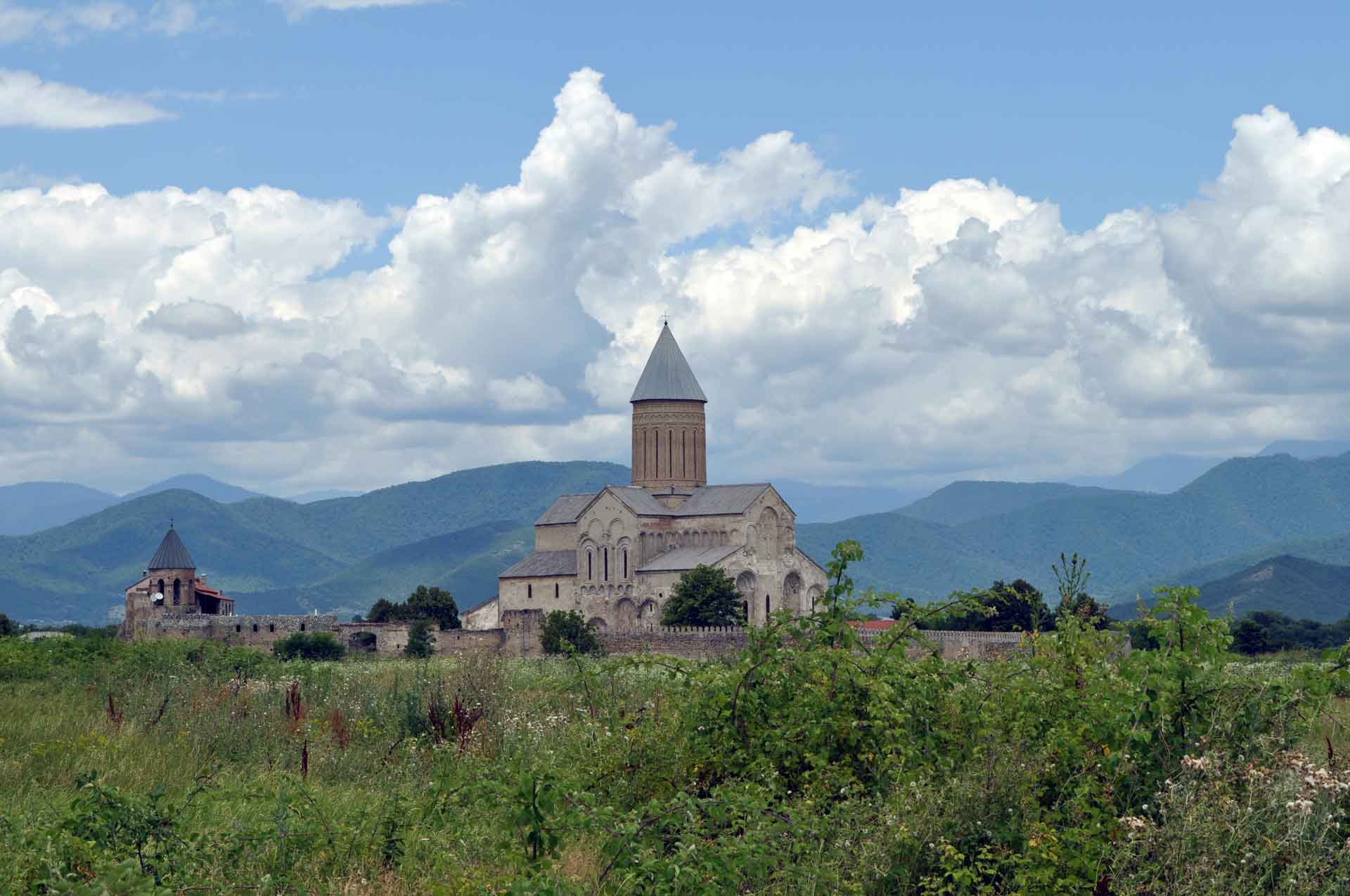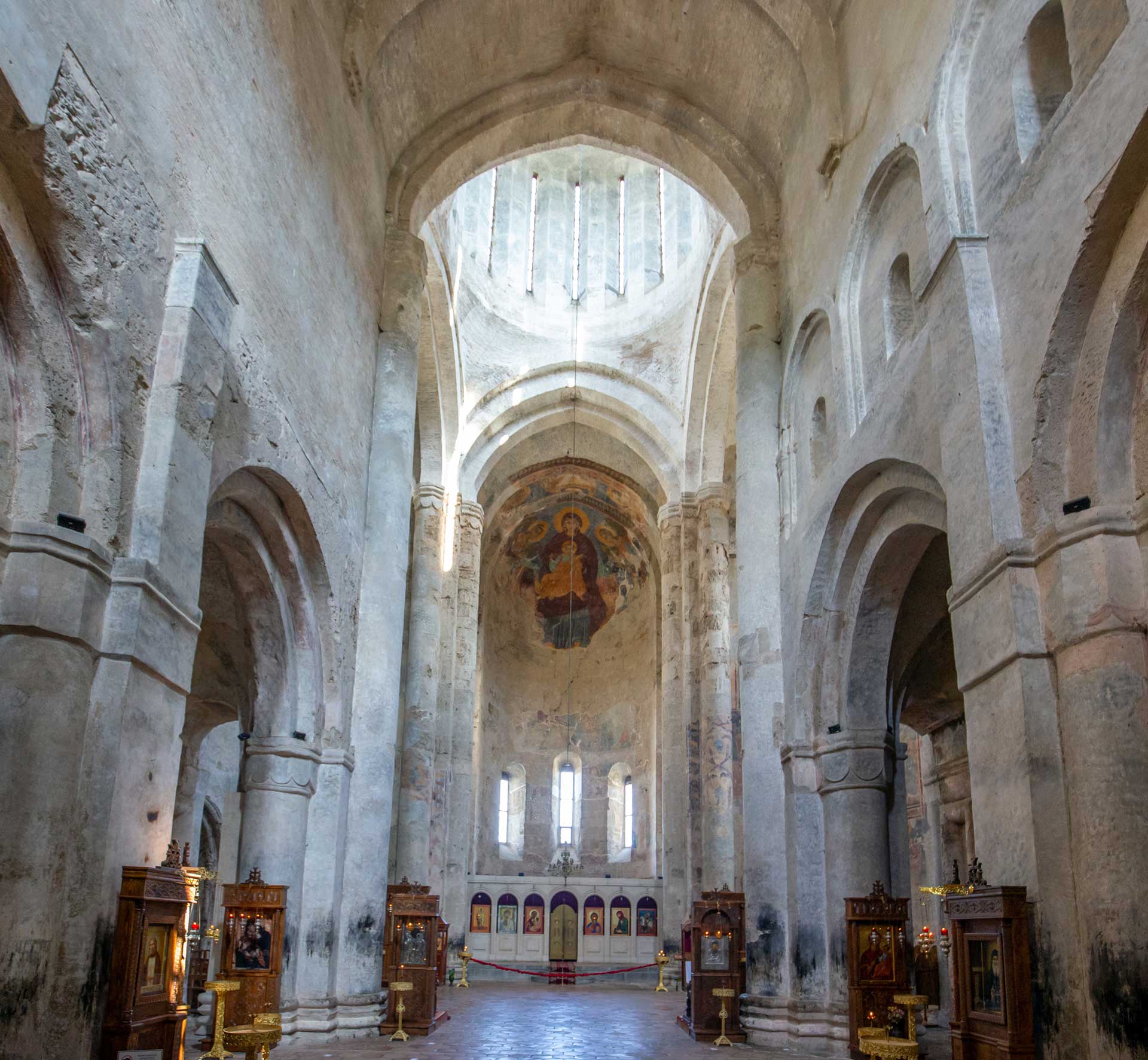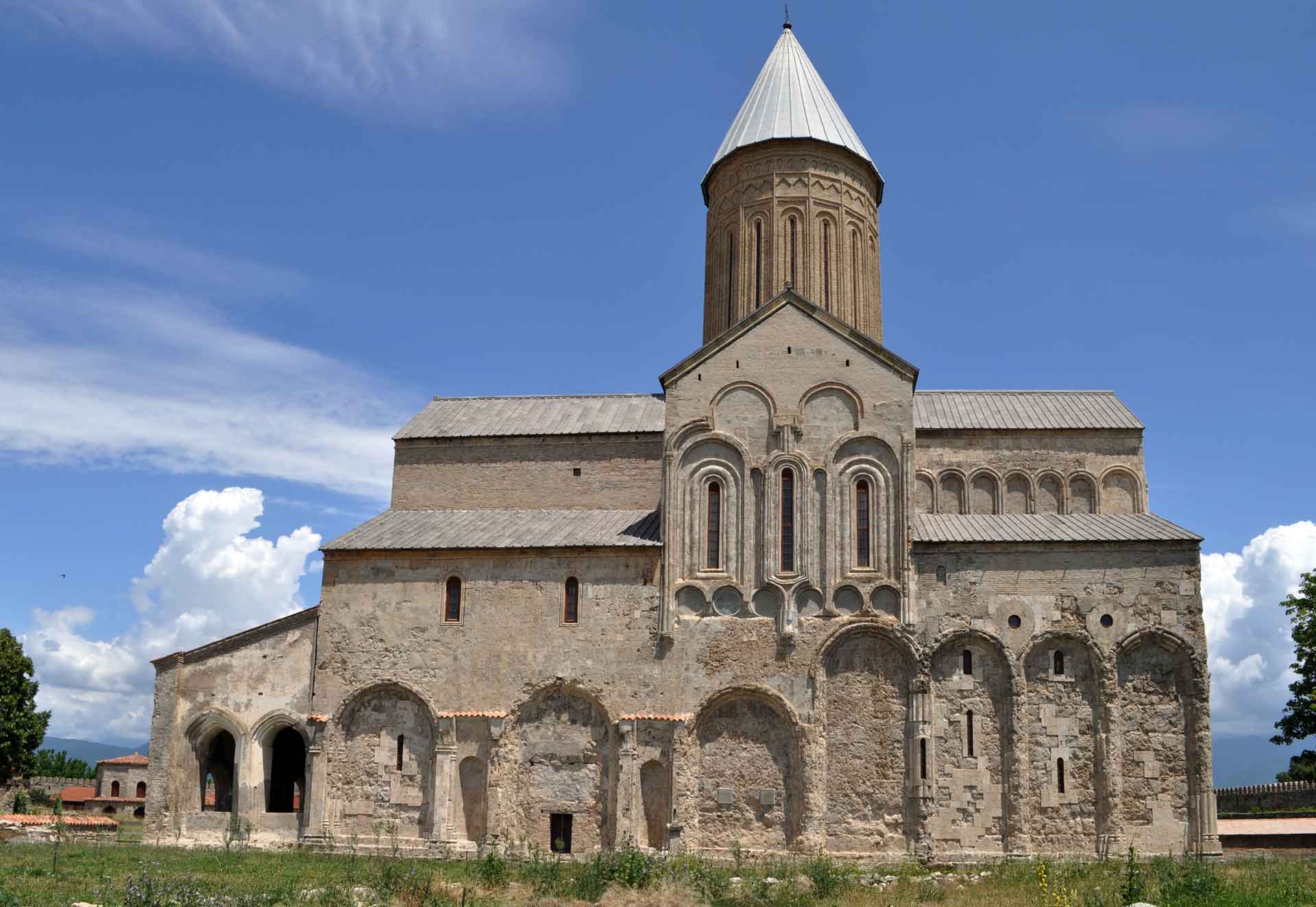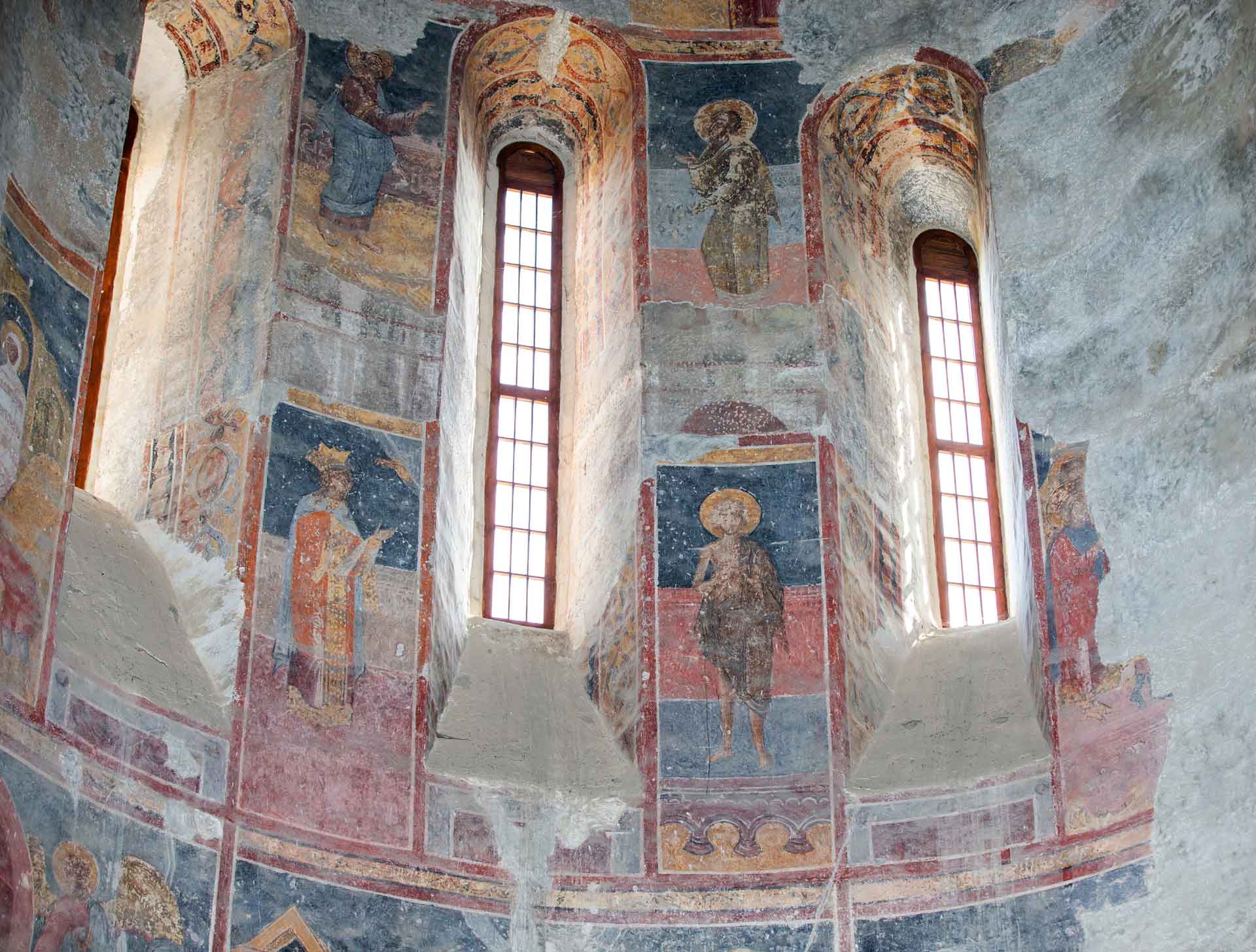
Feel free to add tags, names, dates or anything you are looking for


The Cathedral of St. George at Alaverdi is located 18 km from the town of Telavi in the Alazani Valley. Standing on a plain with the Greater Caucasus Mountains in the distance, the cathedral dominates the surrounding landscape. It is visible from many neighboring towns and villages, and is one of the landmarks of the Kakheti region.

General view of Alaverdi Cathedral
The first church erected on the site of Alaverdi Cathedral was built by Joseph, a monk from the group of the so-called “thirteen Syrian Fathers,” who founded a monastery here in the 560s. In the early Middle Ages, Alaverdi was one of the most venerated churches in Eastern Georgia.

East facade
The extant building of the cathedral dates from the early eleventh century, which was a crucial period in the history of Georgia. King Bagrat III (974-1014) united the greater part of the country under his sovereignty, thereby creating the conditions for widespread economic, cultural, and spiritual revival. This led to a considerable wave of building activity that resulted in the construction of new and the reconstruction of old cathedrals and churches.

Interior view looking east
Alaverdi Cathedral is an impressive building owing to its large size, lofty proportions, and airy interior. It was built on a triconch plan, and is more compact than its predecessor, the cathedral in Kutaisi. The facades of the cathedral are decorated with blind arches: they bear no sculptural adornment, since the facing material – light porous stone – is unsuitable for carving.

South facade
Alaverdi Cathedral is the tallest medieval church in Georgia. Its dome collapsed following an earthquake and was restored between 1495 and 1505 using brick, though it most likely replicates the height and dimensions of the original dome.

The dome
In the nineteenth century, Russian church authorities demolished the side chapels and galleries, and completely whitewashed the interior of the cathedral. Conservation work carried out in the 1960s uncovered six layers of paintings in the cathedral, which date back to a long period lasting from the eleventh to the eighteenth centuries.

Wall painting in the sanctuary
The cathedral is surrounded by massive walls with round towers set in them. In the seventeenth century, the precinct served as residence for the Persian rulers of Kakheti. Between 1616 and 1623, during the reign of Peykar Khan, a palace and barracks were built within the walls.